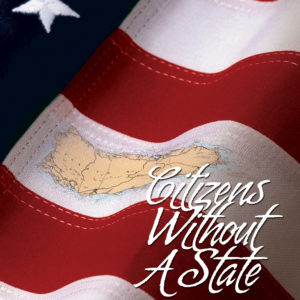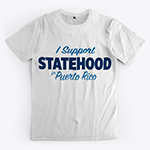If you celebrated St. Patrick’s Day yesterday, you should have thought of Puerto Rico. You probably didn’t, though. Not many people are aware of the way the history of Ireland is intertwined with the history of Puerto Rico.
The wild geese
At the end of the 1600s, when Puerto Rico was a colony of Spain, Ireland was in conflict with the British. England was divided between Catholics and Protestants, and Irish Catholics faced serious discrimination and hardship. As a result, many Irish soldiers in the British army and navy left for other European forces. These soldiers and sailors were known as “wild geese.”
Many went to serve in France, but many also joined the Spanish army. As Spain’s military traveled to the New World, Irish soldiers and sailors turned up in Puerto Rico. Field Marshal Alejandro O’Reilly and Colonel Tomás O’Daly were two Irish officers in the Spanish army who traveled to Puerto Rico and brought their families to settle on the Island.
Other Irishmen jumped ship from the English vessels and joined the Spanish army in Puerto Rico. Irish prisoners were also sent from England to Puerto Rico as indentured servants.
In 1797, the Governor of Puerto Rico, alarmed by the British invasion of Trinidad, insisted that all English-speaking people must leave Puerto Rico. This included the Irish immigrant community. The governor was correct in his fears — England did invade Puerto Rico, but they lost the battle and left under cover of darkness. When the expulsion order was repealed by the Spanish Crown, many members of the Irish community returned to their lives in Puerto Rico.
The potato famine
In the 1840s, Ireland experienced a great famine, and many people left Ireland to come to the United States. Some ships arrived at U.S. ports with contagious illness on board and were turned away. Some of those ships found a harbor in Puerto Rico.
Gina Dorso, writing about her Irish heritage, found a connection with Puerto Rico apart from the fact that many Irish immigrant ended up on the Island. “An Górta Mór [the potato famine] was not just about the blight that led to a potato crop failure,” she wrote, “but British government inaction in the face of mass starvation. Subsequent United States governments have consistently and systematically chosen inaction in the face of disaster on the part of its territories—and the situation in Puerto Rico is just one example.”
Irish immigrants and those who left the Spanish colony of Puerto Rico for New York ended up facing similar kinds of discrimination in their new home. Spain ceded Puerto Rico to the United States just about 50 years later, by which time millions of Irish immigrants had settled into the United States, eventually making up about 10% of the population. When Puerto Ricans became U.S. citizens in 1917, both groups volunteered in the U.S. army throughout World War I.
Modern times
Currently, the population of Irish Americans is much larger than the population of Ireland, just as the stateside population of Puerto Ricans is larger than the number of Puerto Ricans on the Island. Both groups helped to shape the history of New York through the centuries, and of the United States as a whole as the members of the two groups became less concentrated in New York and more widespread across the United States.
St. Patrick’s Day is as good a time as any to think about equality and justice for Puerto Rico. Statehood is the only political status that will guarantee U.S. citizenship and equality with the current 50 states. Tell your legislators that you want to see statehood for Puerto Rico.







One response
Puerto Ricans have been citizens for over 100 years.